Grow Where you are Planted
Two plants that are great examples of tenacity and resourcefulness
February 15, 2021
By Jana Pearce, Visitor Experience Manager
This spring at CNC we are celebrating the tenacity, resourcefulness, and gratitude that have helped to get us and others through a challenging year. Making the most of what you have is a beautiful mindset for us humans to aim for, but for certain members of the plant kingdom it’s essential in order for their species to survive. Adapting to extreme conditions reduces competition for resources, and allows these plants to find a place where they can thrive.
Read more below about some two charismatic examples you can find at CNC that take the phrase “grow where you are planted” to a whole new level.
Spiderwort (Tradescantia spp.)
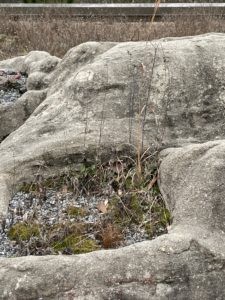
Piedmont granite outcrops are one of Georgia’s hidden natural gems.
These unique habitats are exposed areas of granite rock, and can be massive (like Arabia, Panola, or Stone Mountain) or quite small. They have depressions of varying sizes and depths, most of which have a very thin soil layer. Add in the baking Georgia summer sun, and you get one tough place to grow!
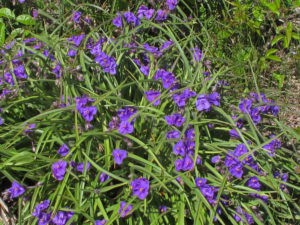
Image by Alan Cressler
Because of this, granite outcrops tend to have many endemic species, or species only found in one particular area. One flora commonly found in spring on granite outcroppings in Georgia is the spiderwort (a common name that includes over 70 different species of plants). These small, three-petaled flowers each last for less than 24 hours, with the plant generating new ones daily for up to 8 weeks. You can find spiderwort at CNC on our Green Roof on the upper level of the Discovery Center, which was designed and planted to mimic a Piedmont granite outcrop.
Longleaf pine (Pinus palustrus)
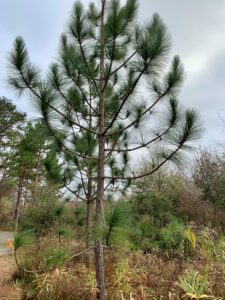
At first glance, healthy longleaf habitat looks quite open and serene. Seussian-looking pines are well spaced, with thick bunches of wiregrass and other flowering plants sprouting low in the sandy soil.
Every few years however, fire creeps, runs, or roars through. In this case the longleaf pines not only survive the extreme conditions, they depend on it!
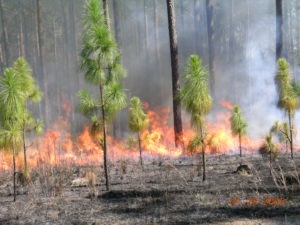
Very young longleaf pine trees start in a ‘grass stage,’ an adaptation where the tree grows thick, long needles protect its core from fires. Mature trees have adapted thick bark which protects them from the heat of the fire. Without the fire it has adapted to endure, other plants begin to take over and outcompete the longleaf pines, resulting in their demise.
Historically, humans have suppressed wildfires and because of that, longleaf pine habitat has reduced drastically across the Southeast. More and more often, prescribed (or pre-planned, easier to control) burns are being used as a tool to restore and maintain longleaf pine habitat.
You can find these unique trees year-round at CNC in our Georgia’s Living Wetlands garden on the south side of the property.
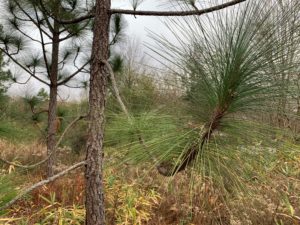
While visiting the Chattahoochee Nature Center and exploring the grounds make sure you check out these two examples of plants that have adapted to extreme conditions and found a place to thrive. They are a good reminder to “grow where we are planted”.
